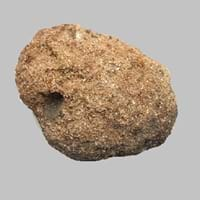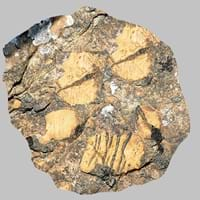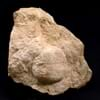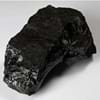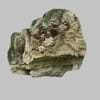Definition
A yellow sandstone which is flexible when cut into thin strips
Diamictite is a sedimentary rock that consists of non-sorted to poorly sorted terrigenous sediment containing particles that range in size from clay to boulders, suspended in a matrix of mudstone or sandstone
Origin
Unknown
Southern Mongolia
Discoverer
Unknown
Unknown
Etymology
From the name of a mountain range where it was found; Itacolumi mountain in Brazil
From Greek dia through and meiktós or mixed
Class
Sedimentary Rocks
Sedimentary Rocks
Sub-Class
Durable Rock, Hard Rock
Durable Rock, Soft Rock
Group
Not Applicable
Not Applicable
Other Categories
Coarse Grained Rock, Fine Grained Rock, Opaque Rock
Coarse Grained Rock, Opaque Rock
Texture
Clastic, Granular, Rough
Clastic
Color
Beige, Black, Brown, Colourless, Cream, Dark Brown, Green, Grey, Light Green, Light to Dark Grey, Pink, Red, White, Yellow
Brown, Buff
Durability
Durable
Durable
Interior Uses
Decorative Aggregates, Floor Tiles, Homes, Interior Decoration, Kitchens
Decorative Aggregates, Interior Decoration
Exterior Uses
As Building Stone, As Facing Stone, Garden Decoration, Office Buildings
As Building Stone, Paving Stone
Other Architectural Uses
Curbing
Curbing
Construction Industry
Cement Manufacture, Construction Aggregate, for Road Aggregate, Production of Glass and Ceramics, Raw material for the manufacture of mortar
As Dimension Stone, Construction Aggregate, for Road Aggregate, Landscaping, Roadstone
Medical Industry
Not Yet Used
Not Yet Used
Antiquity Uses
Artifacts, Monuments, Sculpture
Artifacts
Commercial Uses
An Oil and Gas Reservoir, In aquifers, Petroleum reservoirs, Soil Conditioner, Source of Magnesia (MgO), Tombstones
Commemorative Tablets, Creating Artwork, Production of Lime
Types
Not Available
Bedded Diamictite and Laminated Diamictite
Features
Available in Lots of Colors and Patterns, Generally rough to touch, Very fine grained rock
Host Rock for Lead, Is one of the oldest rock
Archaeological Significance
Monuments
Used
Not Yet Used
Famous Monuments
Data Not Available
Not Applicable
Sculpture
Used
Not Yet Used
Famous Sculptures
Data Not Available
Not Applicable
Pictographs
Not Used
Used
Petroglyphs
Not Used
Used
Figurines
Used
Not Yet Used
Formation
Itacolumite is a sedimentary rock which forms from cemented sand-sized clasts and is a type of sandstone.
Diamictite is unevenly sorted terrigenous, non-calcareous sedimentary rock which forms due to weathering of mudstone and sandstone.
Mineral Content
Calcite, Clay, Clay Minerals, Feldspar, Micas, Quartz
Calcite, Clay, Feldspar, Micas, Quartz
Compound Content
Aluminium Oxide, CaO, Iron(III) Oxide, Potassium Oxide, MgO, Sodium Oxide, Silicon Dioxide
Not Available
Types of Metamorphism
Not Applicable
Not Applicable
Types of Weathering
Biological Weathering, Chemical Weathering
Biological Weathering, Chemical Weathering
Types of Erosion
Chemical Erosion, Coastal Erosion, Wind Erosion
Chemical Erosion, Coastal Erosion, Water Erosion
Grain Size
Coarse or Fine
Coarse Grained
Fracture
Conchoidal
Conchoidal to Uneven
Streak
White
Light to dark brown
Porosity
Highly Porous
Highly Porous
Luster
Dull
Grainy, Pearly and Vitreous
Compressive Strength
Not Available
Cleavage
Perfect
Not Available
Toughness
2.6
Not Available
Specific Gravity
2.2-2.8
4.3-5.0
Transparency
Opaque
Opaque
Density
2.2-2.8 g/cm3
2.2-2.35 g/cm3
Resistance
Heat Resistant, Impact Resistant, Pressure Resistant
Heat Resistant, Impact Resistant
Deposits in Eastern Continents
Asia
China, India, Kazakhstan, Mongolia, Russia, Uzbekistan
China, India, Kazakhstan, Mongolia, Russia
Africa
Namibia, Nigeria, South Africa
Namibia, Nigeria, South Africa
Europe
Austria, Denmark, Germany, Great Britain, Netherlands, Norway, Poland, Sweden, Switzerland, United Kingdom
Austria, Denmark, Germany, Great Britain, Netherlands, Norway, Poland, Sweden, Switzerland, United Kingdom
Others
Greenland
Not Yet Found
Deposits in Western Continents
North America
Canada, USA
Canada, USA
South America
Brazil
Brazil, Venezuela
Deposits in Oceania Continent
Australia
New South Wales, New Zealand
New South Wales, New Zealand
All about Itacolumite and Diamictite Properties
Know all about Itacolumite and Diamictite properties here. All properties of rocks are important as they define the type of rock and its application. Itacolumite and Diamictite belong to Sedimentary Rocks.Texture of Itacolumite is Clastic, Granular, Rough whereas that of Diamictite is Clastic. Itacolumite appears Rough and Diamictite appears Banded. The luster of Itacolumite is dull while that of Diamictite is grainy, pearly and vitreous. Itacolumite is available in beige, black, brown, colourless, cream, dark brown, green, grey, light green, light to dark grey, pink, red, white, yellow colors whereas Diamictite is available in brown, buff colors. The commercial uses of Itacolumite are an oil and gas reservoir, in aquifers, petroleum reservoirs, soil conditioner, source of magnesia (mgo), tombstones and that of Diamictite are commemorative tablets, creating artwork, production of lime.
